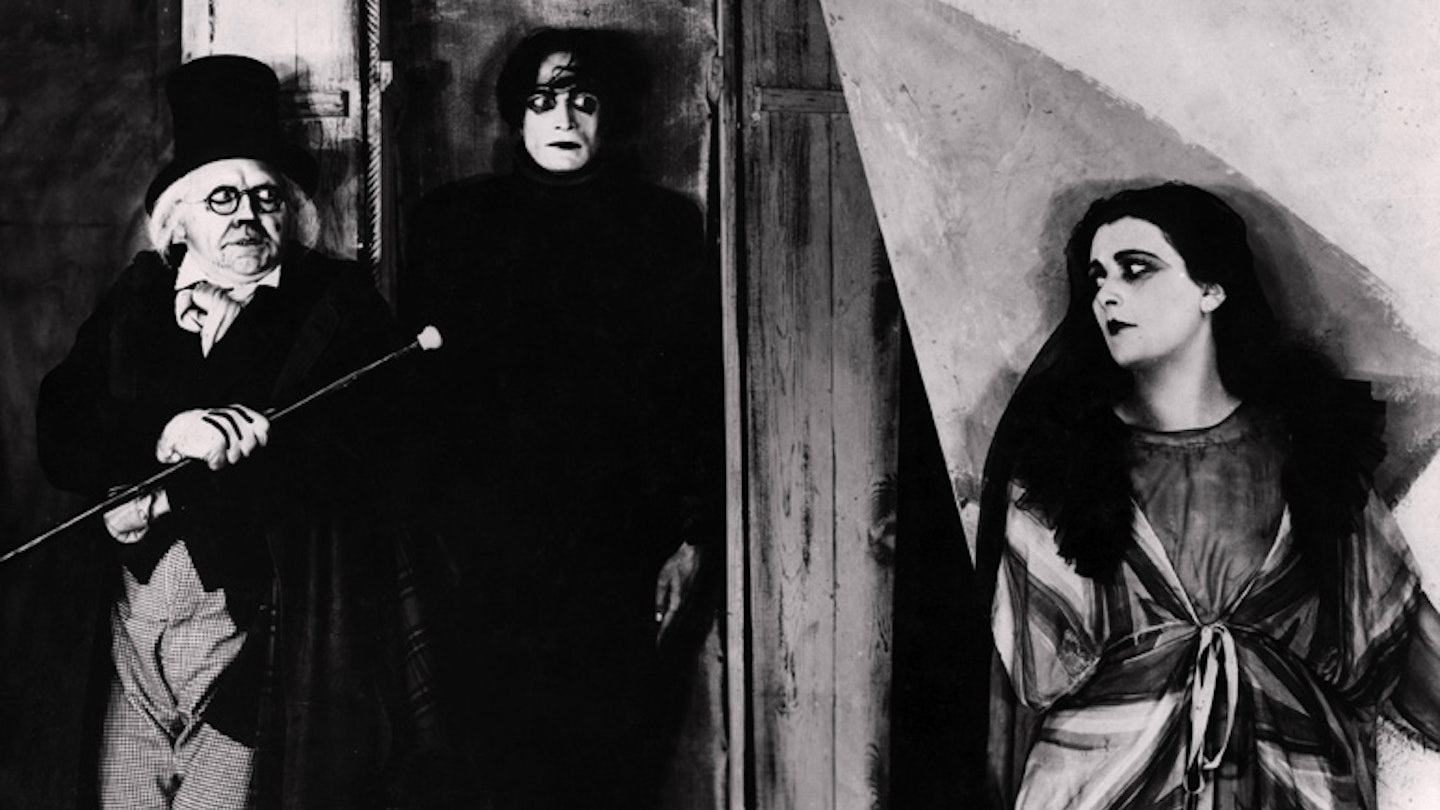Key filmmakers: Fritz Lang, Robert Wiene, F. W. Murnau, Carl Boese
Key dates: 1919-1926
What is it? To say that Germany in the 1920s was not in the mood for a swathe of, say, jaunty stoner comedies would be an understatement. The mood was sombre and the artists of the time were inspired by the horrors of the trenches and the bitter aftermath of war. German Expressionist directors, like their Dadaist counterparts in modern art, tapped into this fractured society to fill their films with equally fractured characters, like Peter Lorre’s child murderer in M and the cadaverous Cesare in The Cabinet Of Dr. Caligari. They were deposited in nightmarish urban worlds that spoke vividly to a nation experiencing what trained professionals refer to as “a major downer”.
The talents of soldiers-turned-filmmakers like Robert Wiene and Fritz Lang were augmented by gifted writers like Thea von Harbou (Metropolis, Destiny, M), cinematographer Karl Freund (The Golem, Metropolis), set designers including Hermann Warm (Dr. Caligari, Destiny), and painters Walter Röhrig and Walter Reimann (Dr. Caligari). From this pool of able men and women, and usually under the umbrella of Berlin’s Ufa studios, strange new epics appeared boasting creepy, jagged, shadowy mise-en-scènes. In fact, scènes had never before been, erm, mised quite so disturbingly as in F.W. Murnau’s Dracula tale Nosferatu or Wiene’s Caligari, where canted camera angles, grotesque make-up and cardboard cut-outs created a heightened expression of the country’s inner turmoil.
What to watch: The Cabinet Of Dr. Caligari (1920) (pictured top), Phantom (1922), Dr. Mabuse The Gambler (1922), Die Nibelungen (1924), Metropolis (1927), M (1931)
What did it influence? Expressionism virtually birthed the horror genre, beginning with the 1930s Universal Monsters series. Since then, there’s been at least a drop or two of Expressionism’s dark elixir in most great horrors, from Hitchcock’s Psycho to Tim Burton’s spooky creations (Danny DeVito’s Penguin is Dr. Caligari, without the expensive medical training). Film noir, of which Lang was also a notable exponent, borrowed from these shadowy, jarring cinescapes, like Expressionism’s light-fingered half-brother. Modern sci-fis like Blade Runner, Dark City and The Matrix also carry the torch for one of cinema’s most impactful eras.
Trivia: Metropolis’ 750 child extras were provided with cocoa and cake at 3pm sharp every day on set.
What to say: “The Cabinet Of Dr. Caligari features cinema’s first twist ending.”
What not to say: “Why does everyone have such long fingers?”
